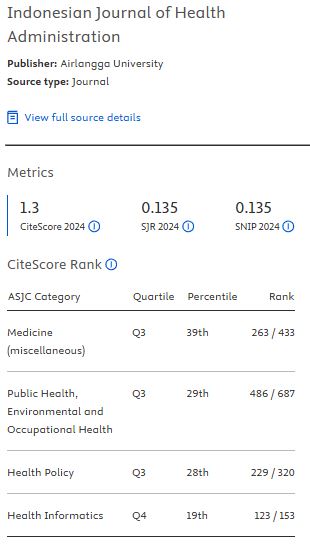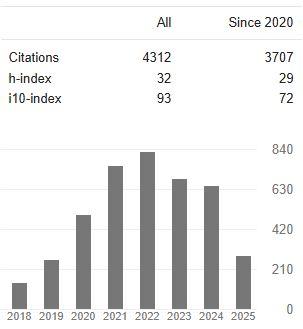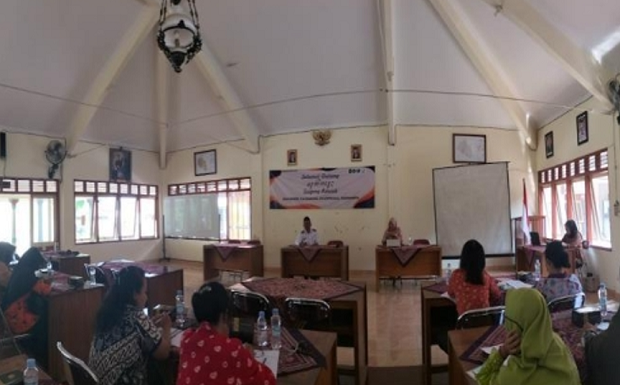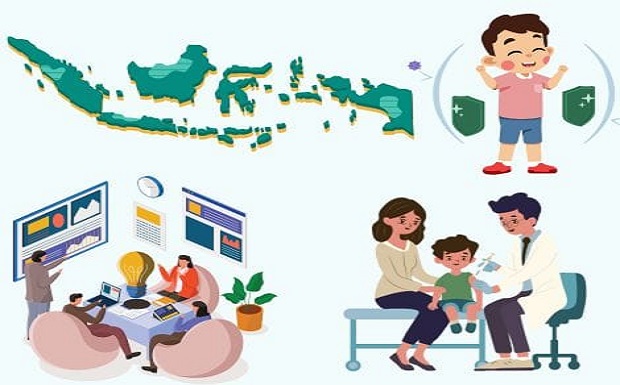IMPLEMENTATION OF PRIMARY HEALTH CARE SYSTEM IN COUNTRIES
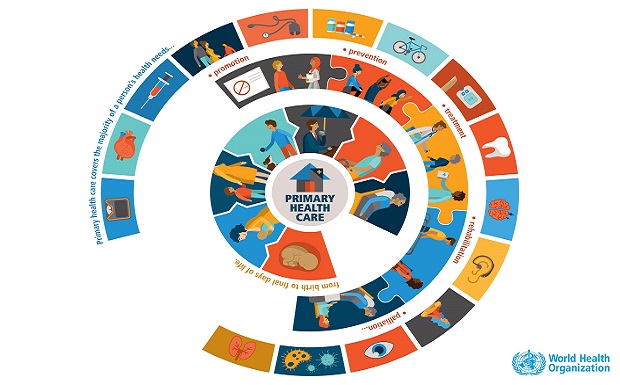
Background: Primary Health Care (PHC) systems are essential for delivering comprehensive and accessible health services globally, focusing on individuals’ and communities’ fundamental health and well-being.
Aims: To assess PHC systems to ensure universal access, regardless of socio-economic status or location, by providing comprehensive services such as illness prevention, treatment, rehabilitation, support, and health promotion.
Methods: This study utilised the PICO framework, with methods and results of this systematic review based on PRISMA guidelines. Articles were identified through an initial generic search in PubMed, ScienceDirect, and Scopus databases.
Results: After the assessment, a total of 18 articles were selected. The following priorities for PHC policy implementation emerged: enhancing collaboration between public and private sectors, improving information sharing through technology and health literacy, establishing quality evaluation systems, and promoting community-based training programs. Identified challenges include workforce shortages, particularly in rural areas, and inadequate coordination between primary and secondary care. Addressing these challenges and focusing on these priorities can lead to better health outcomes and more effective PHC systems.
Conclusion: The Alma-Ata Declaration of 1978 was a transformative milestone in global health. It advocated for "Health for All" through Primary Health Care (PHC). Despite initial challenges, the principles of Alma-Ata have significantly influenced PHC systems worldwide.
Keywords: Country-specific health primary care, health care systems, primary healthcare
Alharbi, A. and Aljuaid, M. (2024) ‘Patients and Health Professionals’ Perceptions of Primary Health Care Services in Saudi Arabia: A Scoping Review’, International Journal of General Medicine, Volume 17, pp. 1155–1170. Available at: https://doi.org/10.2147/ijgm.s442892.
Azimzadeh, S. et al. (2024) ‘Reforms and innovations in primary health care in different countries: scoping review’, Primary Health Care Research and Development. Cambridge University Press. Available at: https://doi.org/10.1017/S1463423623000725.
Bálint, C. (2020) ‘The capacities of primary health care in hungary: A problem statement’, European Journal of Investigation in Health, Psychology and Education, 10(1), pp. 327–345. Available at: https://doi.org/10.3390/ejihpe10010025.
Croke, K. et al. (2024) ‘Primary health care in practice: usual source of care and health system performance across 14 countries’, The Lancet Global Health. Elsevier Ltd, pp. e134–e144. Available at: https://doi.org/10.1016/S2214-109X(23)00513-2.
Dahal, R. et al. (2024) ‘Patient-reported primary health care experiences in Canada: The challenges faced by Nepalese immigrant men’, Journal of Migration and Health, 9. Available at: https://doi.org/10.1016/j.jmh.2024.100223
Dodd, R. et al. (2021) ‘Organization of primary health care systems in low- and middle-income countries: Review of evidence on what works and why in the Asia-Pacific region’, BMJ Global Health. BMJ Publishing Group. Available at: https://doi.org/10.1136/bmjgh-2019-001487.
Espinosa-González, A.B. and Normand, C. (2019) ‘Challenges in the implementation of primary health care reforms: A qualitative analysis of stakeholders’ views in Turkey’, BMJ Open, 9(7). Available at: https://doi.org/10.1136/bmjopen-2018-027492.
Haque, M. et al. (2020) ‘Strengthening primary health-care services to help prevent and control long-term (Chronic) non-communicable diseases in low- and middle-income countries’, Risk Management and Healthcare Policy. Dove Medical Press Ltd, pp. 409–426. Available at:https://doi.org/10.2147/RMHP.S239074.
Hone T. et al (2018) Revisiting Alma-Ata: what is the role of primary health care in achieving the sustainable development goals? Lancet. 2018;392(10156):1461–1472. doi: 10.1016/S0140-6736(18)31829-4.
Kassai, R. et al. (2020) ‘Priorities for primary health care policy implementation: Recommendations from the combined experience of six countries in the Asia-Pacific’, Australian Journal of Primary Health, 26(5), pp. 351–357. Available at: https://doi.org/10.1071/PY19194.
Lionis, et al. (2019). Integrated people-centred primary health care in Greece: Unravelling Ariadne’s thread. Prim Health Care Res Dev 20. https://doi.org/10.1017/S1463423619000446
ontesanti, S. et al. (2018) 2018. Designing a framework for primary health care research in Canada: A scoping literature review. BMC Fam Pract. https://doi.org/10.1186/s12875-018-0839-x
Sebai,Z.A. (2019) ‘Primary health care: Is it a decorated bride?’, Journal of Family and Community Medicine, 26(2), pp. 141–143. Available at: https://doi.org/10.4103/jfcm.JFCM_44_19.
Senitan, M. and Gillespie, J. (2020) ‘Health-Care Reform in Saudi Arabia: Patient Experience at Primary Health-Care Centers’, Journal of Patient Experience, 7(4), pp. 587–592. Available at: https://doi.org/10.1177/2374373519872420.
Sheikh, K. and Ghaffar, A. (2021) ‘PRIMASYS: a health policy and systems research approach for the assessment of country primary health care systems’, Health Research Policy and Systems. BioMed Central Ltd. Available at: https://doi.org/10.1186/s12961-021-00692-3.
Tabrizi, J.S., Pourasghar, F. and Nikjoo, R.G. (2019) Governance of Iranian Primary Health Care System: Perceptions of Experts, Iran J Public Health. Available at: http://ijph.tums.ac.ir.
Windle, A. et al. (2023) ‘Evaluating local primary health care actions to address health inequities: analysis of Australia’s Primary Health Networks’, International Journal for Equity in Health, 22(1). Available at: https://doi.org/10.1186/s12939-023-02053-8.
Xu, J. et al. (2022) ‘Primary Health Institutions and Service Quality in
China: Implications for Health Policy’, International Journal of Environmental Research and Public Health, 19(19). Available at: https://doi.org/10.3390/ijerph191912063.
Zhang, W. et al. (2020) ‘Factors Contributing to Patients’ Preferences for Primary Health Care Institutions in China: A Qualitative Study’, Frontiers in Public Health, 8. Available at: https://doi.org/10.3389/fpubh.2020.0041
Copyright (c) 2024 Memo Lukito, Ascobat Gani

This work is licensed under a Creative Commons Attribution-ShareAlike 4.0 International License.
1. As an author you (or your employer or institution) may do the following:
- make copies (print or electronic) of the article for your own personal use, including for your own classroom teaching use;
- make copies and distribute such copies (including through e-mail) of the article to research colleagues, for the personal use by such colleagues (but not commercially or systematically, e.g. via an e-mail list or list server);
- present the article at a meeting or conference and to distribute copies of the article to the delegates attending such meeting;
- for your employer, if the article is a ‘work for hire', made within the scope of your employment, your employer may use all or part of the information in the article for other intra-company use (e.g. training);
- retain patent and trademark rights and rights to any process, procedure, or article of manufacture described in the article;
- include the article in full or in part in a thesis or dissertation (provided that this is not to be published commercially);
- use the article or any part thereof in a printed compilation of your works, such as collected writings or lecture notes (subsequent to publication of the article in the journal); and prepare other derivative works, to extend the article into book-length form, or to otherwise re-use portions or excerpts in other works, with full acknowledgement of its original publication in the journal;
- may reproduce or authorize others to reproduce the article, material extracted from the article, or derivative works for the author's personal use or for company use, provided that the source and the copyright notice are indicated.
All copies, print or electronic, or other use of the paper or article must include the appropriate bibliographic citation for the article's publication in the journal.
2. Requests from third parties
Although authors are permitted to re-use all or portions of the article in other works, this does not include granting third-party requests for reprinting, republishing, or other types of re-use.
3. Author Online Use
- Personal Servers. Authors and/or their employers shall have the right to post the accepted version of articles pre-print version of the article, or revised personal version of the final text of the article (to reflect changes made in the peer review and editing process) on their own personal servers or the servers of their institutions or employers without permission from JAKI;
- Classroom or Internal Training Use. An author is expressly permitted to post any portion of the accepted version of his/her own articles on the author's personal web site or the servers of the author's institution or company in connection with the author's teaching, training, or work responsibilities, provided that the appropriate copyright, credit, and reuse notices appear prominently with the posted material. Examples of permitted uses are lecture materials, course packs, e-reserves, conference presentations, or in-house training courses;


